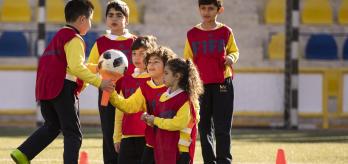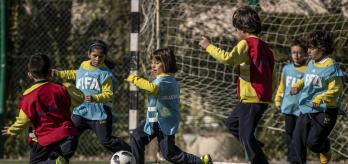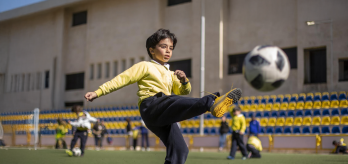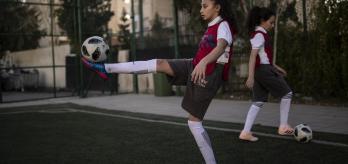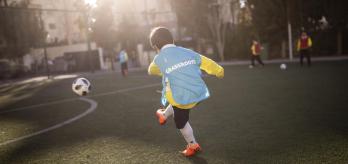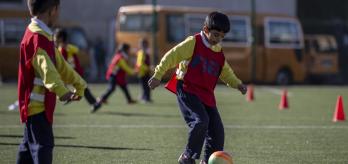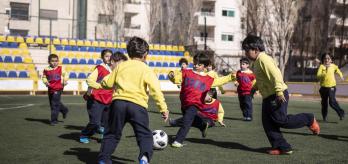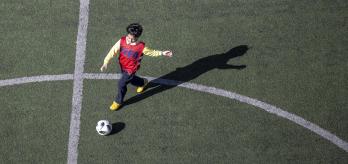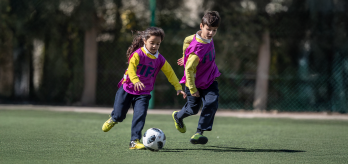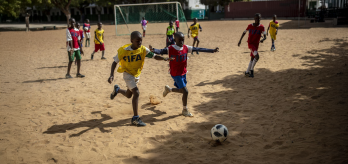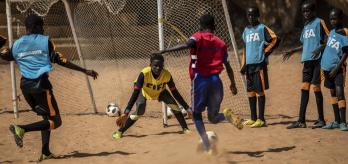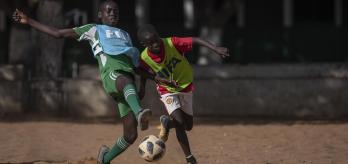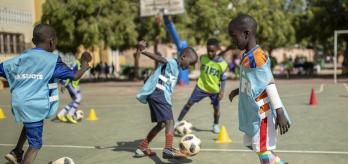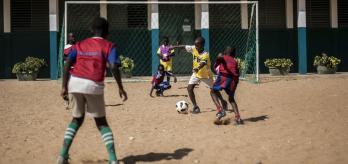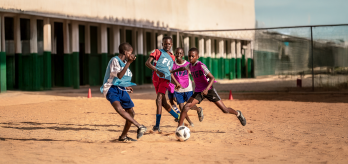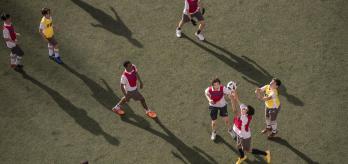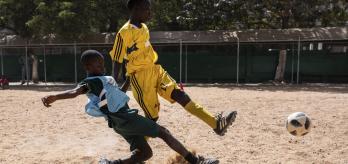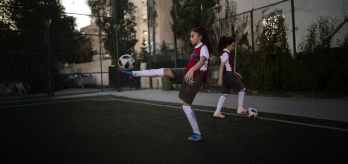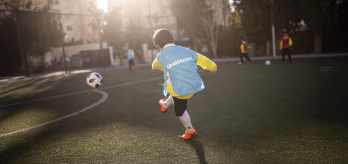In this instalment of FIFA’s Grassroots Coaching Essentials series, Dr Jené Baclawski highlights the importance of building spatial awareness in young players. She has chosen three different tips and activities which teach players about space, and will help children develop better positioning, enhanced decision-making, and a greater understanding of teamwork. These exercises are tailored for players between the ages of 4 and 8.
During the 9-minute presentation below, Jené offers a detailed explanation of the key tips and how they can be applied in practice. This is followed by a written summary of the main points and accompanied by diagrams that break down each sample activity and can be used by coaches to apply the tips to their own sessions.
Tip 1: Improve positioning
Activities that introduce young players to spatial awareness are excellent methods to improve their positioning which is one of the vital components of football. Coaches can support this development by focusing on the following key areas:
-
Thinking about space: Activities should be designed to encourage players to be aware of their surroundings and think actively about their positioning on the pitch.
-
Enhancing creativity: From having a better understanding of positioning, players will gain confidence in their ability to move freely in space, which will encourage greater creativity.
-
Keeping it fun: When the activities are fun and challenging, players are more likely to remain motivated and fully engaged in the learning process.
Tip 2: Enhance decision-making
Building spatial awareness in young players can also improve their critical thinking skills. This, in turn, can be aided by the coach’s feedback or by the design of the session. Here is how an activity can foster greater decision-making in players:
-
Encourages critical thinking: In activities based on dynamic environments, players need to rely on their vision and critical thinking skills to identify space to have more time on the ball.
-
Recognising open spaces: By congesting the area within which the activity is taking place, players will actively look to find open space to receive the ball.
-
Coaching feedback: By asking leading questions or offering hints, coaches can help players to think critically about space or their movements during an activity.
Tip 3: Support teamwork
Building spatial awareness in young players is not just critical for their understanding of their own position, but also where their team-mates are on the field of play. Here are three reasons why spatial awareness activites enhance teamwork:
-
Supporting team-mates: Players will actively move into an area where they can receive the ball to prevent a team-mate from losing possession which helps them understand the benefits of space for the greater good of the team.
-
Working without the ball: Young players will further understand that what they can do on the ball is just as important as their movement into space to receive it.
-
Communication and cooperation: Organising team-based activities will encourage players to work together which will help foster stronger relationships within the group.
Key Take-aways
Following the main points raised by Jené, coaches should have a greater understanding of why it is important to build spatial awareness in players from such a young age. Here is a summary of the key information to take from this presentations:
-
Keep activities engaging and fun: When having fun and being actively engaged in an enjoyable activity, players are far more likely to take in and remember what they are being taught.
-
Encourage critical thinking: Asking players thought-provoking questions is crucial in encouraging them to reflect on their surroundings, which in turn sharpens their decision-making on the pitch.
The ball is not the only important thing: Through teamwork-based activities, children come to understand that effective movement off the ball and spatial awareness are just as vital as their actions when in possession.


